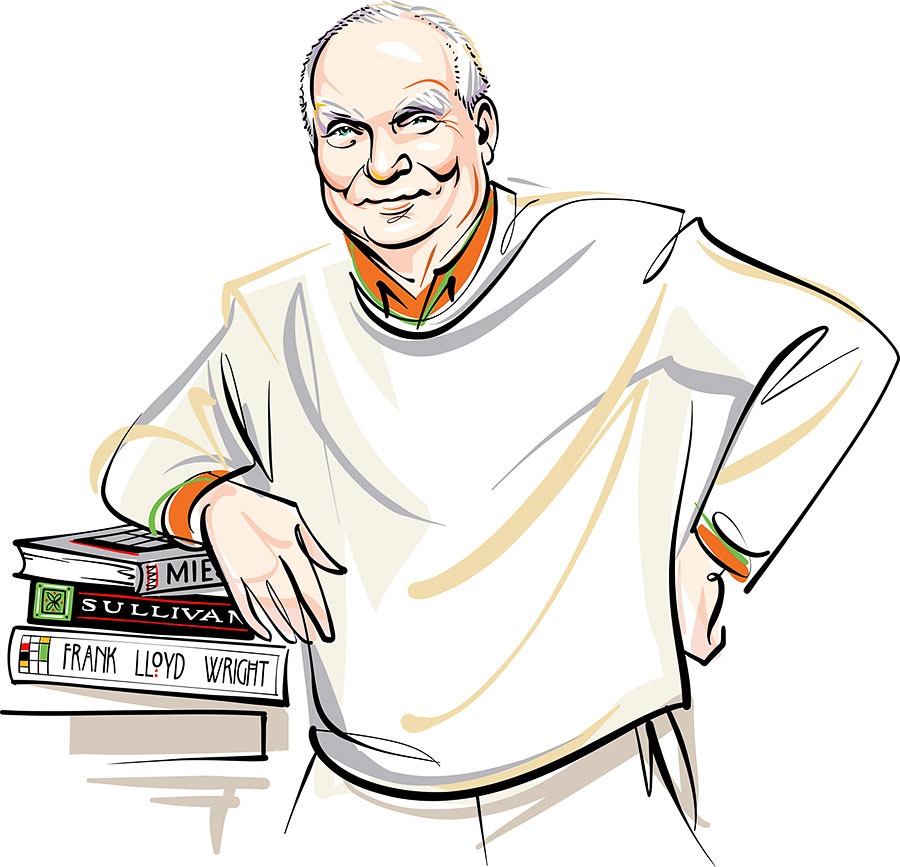■ I was the first cultural historian of Chicago. When I got the job in 2002, Commissioner of Cultural Affairs Lois Weisberg gave me a two-word description: “Help everybody.” I’ve often been called upon by mayors to give perspective on historical events. I’ll also get calls from folks who want to know unusual, obscure things or verify where their great-grandfather worked or know how the street numbers changed. Every call feels like a combination of Russian roulette and the lightning round of Jeopardy!
■ In my emeritus role, I get to retain my office on the fifth floor of the Cultural Center. It’s the only city office with a player piano, which was made by a company out of Elgin called Seybold. To pick up extra money in the 1920s, African American pianists like Jelly Roll Morton made piano rolls. So when you put one on, those are Jelly Roll’s fingers pushing the keys. It’s like a ghost concert.
■ I remember fanning through my grandmother’s Reader’s Digest as a kid. There was a line drawing of a building. I asked my grandmother, “What is this?” And she said, “Oh, that’s Carson Pirie Scott. That’s where I buy my stockings.” I said, “Would you take me along next time you go?” So she did, and I was just mesmerized. I put my hands against the exterior ironwork and could feel the vibe of it. People react to a Louis Sullivan buildings like that one and the Auditorium Theatre because they were created in the spirit of a poem or a piece of music. A Sullivan building will play your emotions like a piano.
■ I have a pair of brass doorknobs with the board of education seal on them. When I was in grade school, many teachers and students died in a fire at Our Lady of the Angels in Humboldt Park. They blamed some of the casualties on the door locks. When they then came to replace the doorknobs in my school in Rogers Park, I wrote a letter to the principal to protest. I got called down to her office, and everybody thought I was in trouble, but the principal was a wonderful lady. She said, “We’re sorry you’re so upset by this, but we have to change the locks.” Then she reached into her drawer and gave me the pair of doorknobs. That started my collecting obsessiveness.
■ One of my favorite things to do is get a bag of fried shrimp from Lawrence’s Fish & Shrimp on Canal Street and eat them on the boat dock behind. I love to just sit there, enjoy my shrimp, look at the old warehouses, and imagine what it was like when the big steamships used to pull up.
■ Richard Nickel, a great photographer and historian of Louis Sullivan, was one of my mentors. I met him when I was still in my midteens, and soon he was taking me along to see buildings on the South Side that were earmarked for demolition. He would let me look at the building and just absorb the powerful intangibles and not say a word. Then we would have lunch and discuss it. I was supposed to be with him the day he was killed in the collapse of the old Stock Exchange Building, but he got there earlier than I did. I was part of the search party that dug through the rubble. They found his body in the subbasement. I will not walk on the same side of the street where that building was.
■ I’ll often ride my bike along the lakefront path from Hyde Park to downtown. My favorite music to put on my headphones is “Victory Stride” by the great African American jazz composer James P. Johnson. It packs in bursts of intense energy separated by interludes, and I delight in lucky instances when the interludes play when the lake and distant skyline aren’t visible. Then — bam! — the skyline suddenly appears in sync with the powerful flourishes.
■ If I had to throw out all my books on Chicago and keep two, they’d be Donald L. Miller’s City of the Century and Tom Dyja’s The Third Coast.



